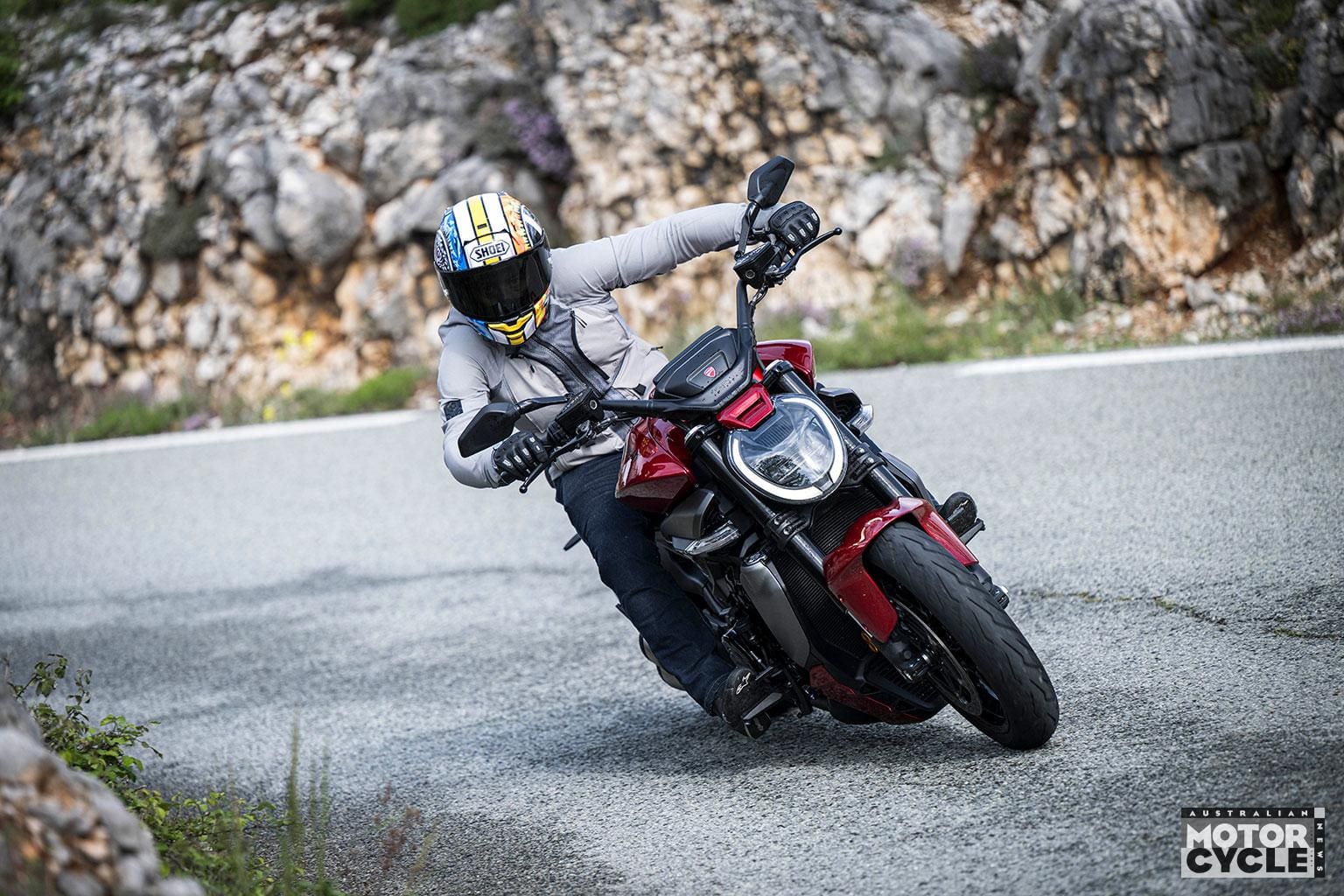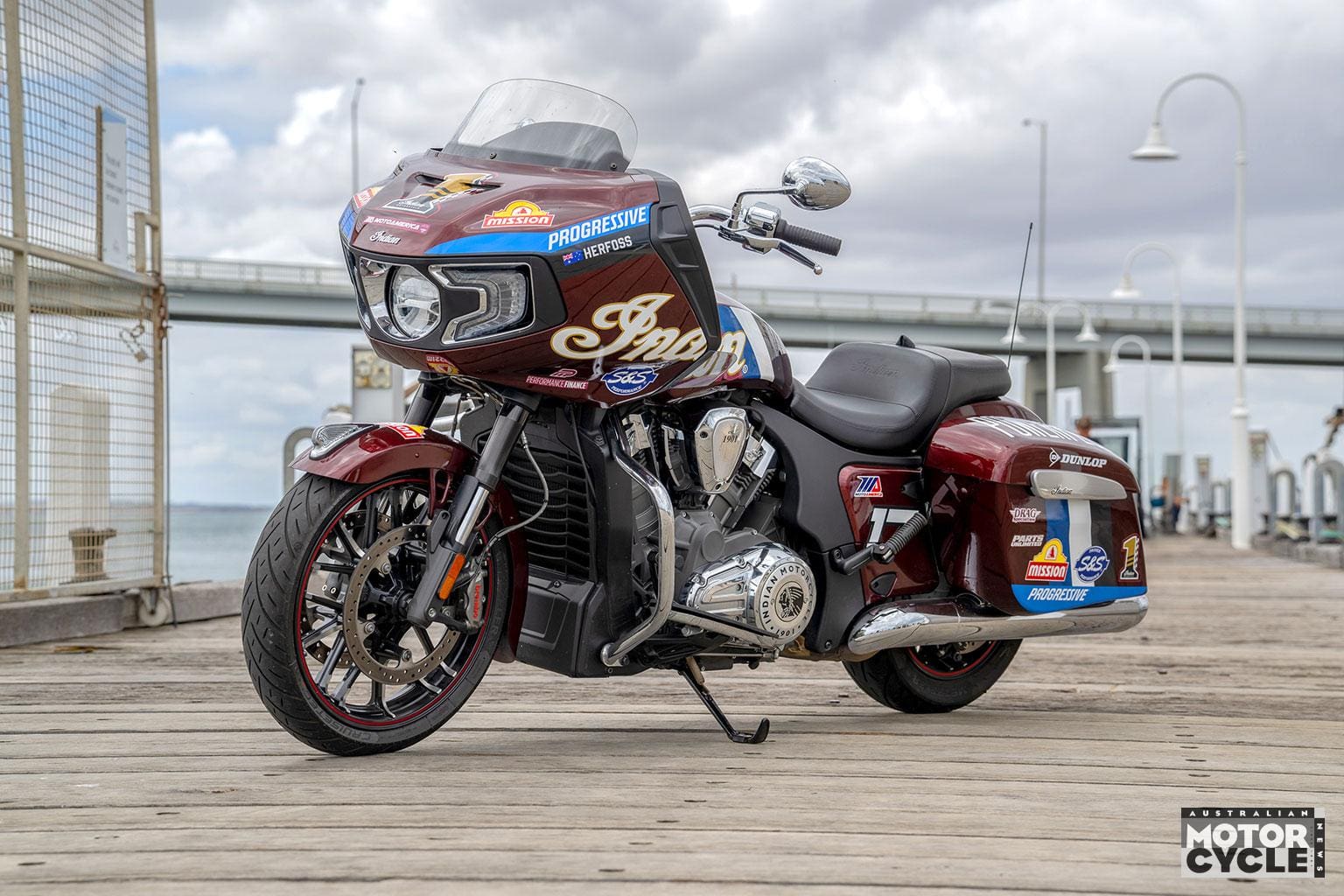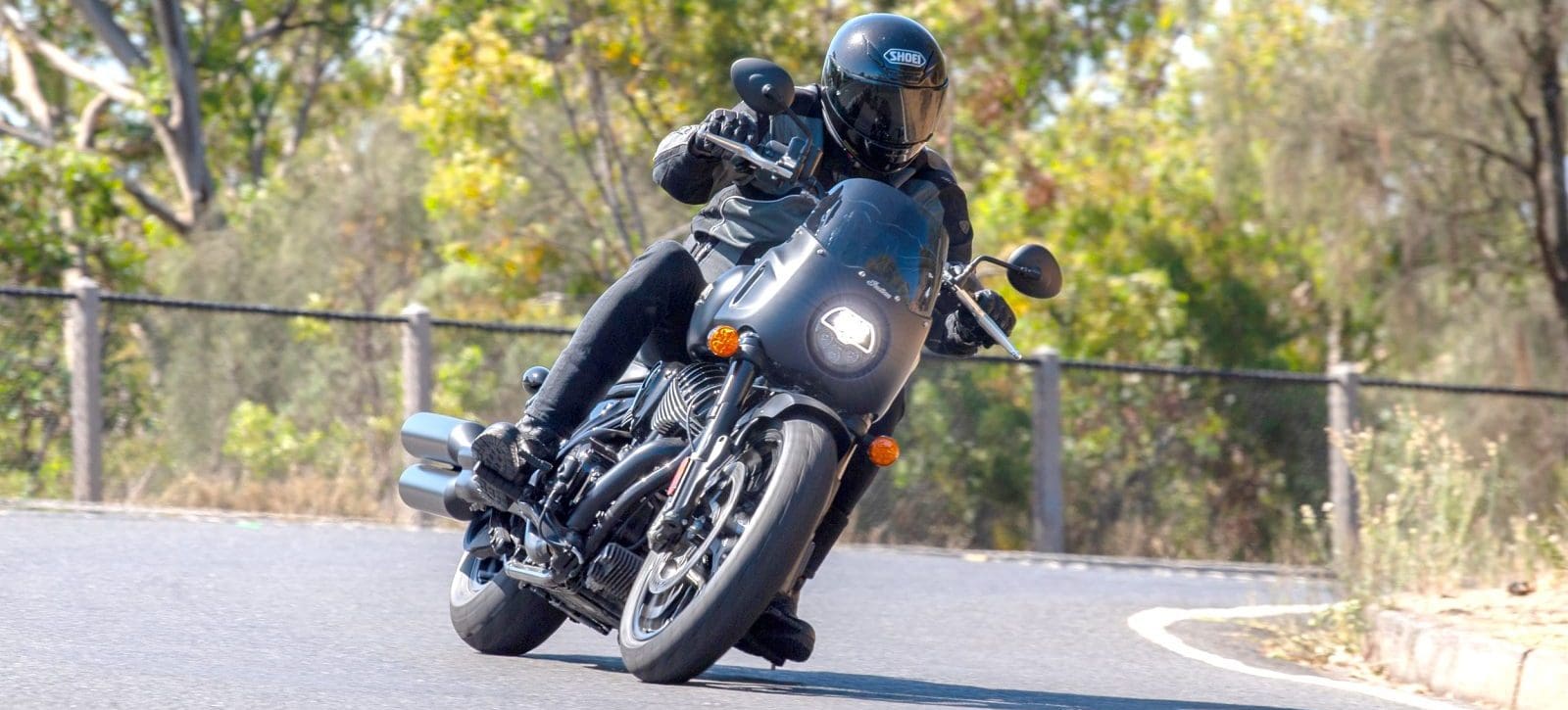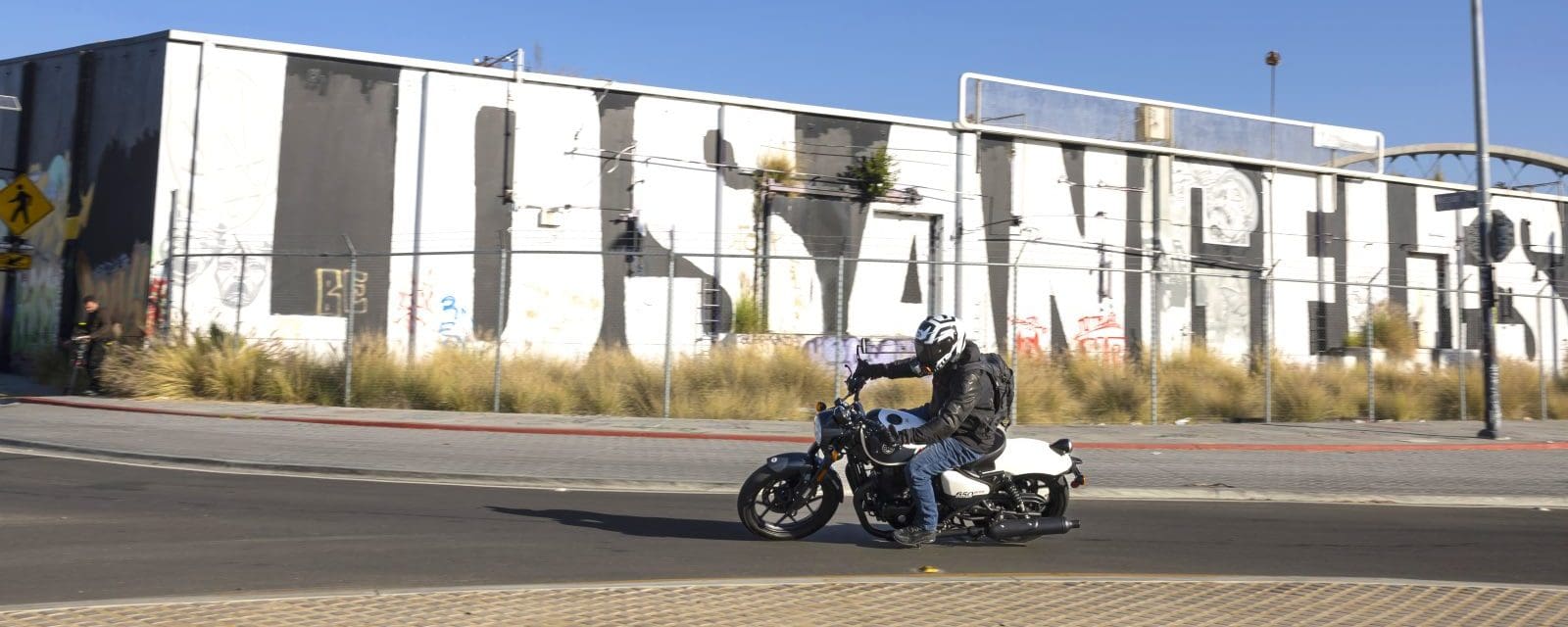In the past 25 years Harley-Davidson has sold around 2.5 million touring bikes, fair dinkum mile eaters like the Road Glide, the Ultra and the Street Glide. These are the bikes Harley calls its Grand American Touring line and, while sales are somewhat less than half Harley’s total, the price point means they’re a major part of its profitability. Where the money goes, the good shit engineering-wise flows.
So at the release of the 2024 Road and Street Glides held on the Gold Coast last month I wasn’t expecting too many surprises. After all, gradual evolution based on customer feedback is what we’ve come to expect from Harley. What blew me away was I had no idea the company had progressed the touring ideology so far.
That has to be put in context. I’m old; the last time I was invited to a Harley release was for the Ultra in 1989 and it amounted to a sausage sizzle out the back of Frasers and the keys to Warren’s private bike for the next month. It came home on a trailer, possibly why he didn’t talk to me for a decade. Since then I’ve ridden a few to get a taste of what’s happening but figured it is what it is and that’s about as good as it’ll get. And the 5200km I did on that first Ultra was bloody brilliant. Bang, all that went out the door once I’d put a few kays up on the new tourers.
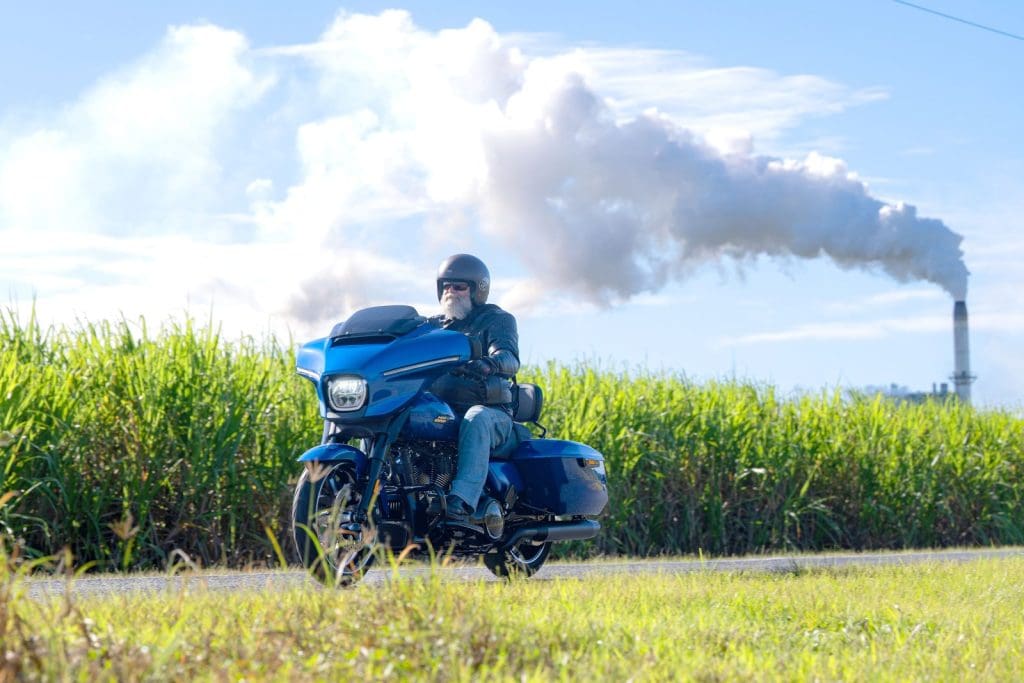
Every part of these bikes has been tweaked and tweaked again in pursuit of touring excellence to the point where even Harley is seemingly struggling to come up with updates. Or maybe not, because the 2024 models boast changes over the 2023 models like a revised and flatter torque curve (3 percent more power, 4 percent more torque) for the 117 cubic-inch, eight-valve engine. This comes from smoothing out the intake manifold and tweaking the ECU. Harley’s also revised the CVO’s liquid-cooled cylinder-head system and made it standard across the range.
There’s been a whole lot of simulated wind-tunnel testing that’s brought about a bunch of tweaks to the bodywork but none of that has resulted in too much departure from ‘the look’ that so many owners love. That’s typical of Harley though; don’t rock the traditional boat, especially in a year when it’s hit hard with the high-tech stuff.
Yep, the people who invented the iPhone have developed motorcycling’s most incredible infotainment interface. Excuse me, gurgle, I’m severely out of my tech depth here so there’s the possibility of total arse about face. Most obvious is the 12.3-inch touchscreen that you can use wearing gloves – catch up iPhone – which gives riders a bunch of options for the overall look while adding in the map and trip details you dialled in on the Harley app. It also gives full information on the bike itself to the point where I couldn’t even find the widget for telling me tyre pressures.
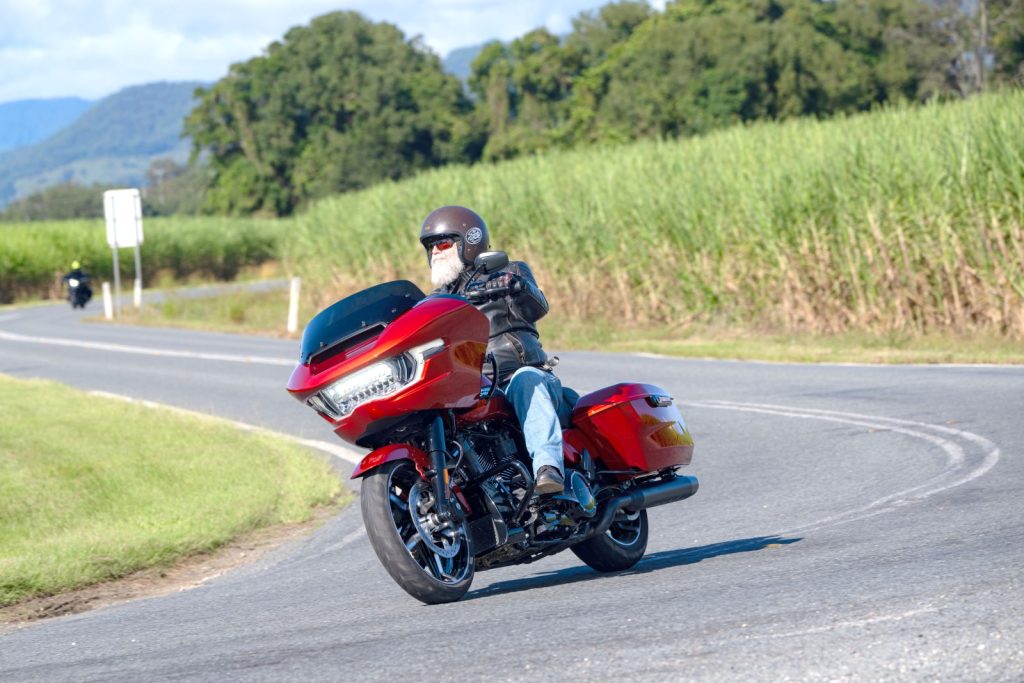
If that all sounds overwhelming for someone who hasn’t bothered with a neutral light for 20 years, here’s where the real sophistication comes in. For the first time ever in my motorcycling career I managed to use the app and mapping functions and find all the controls I needed and some I didn’t. None of it through the touchscreen though. While I’m sure that works fine, the handlebar button controls are intuitive and easy to use without taking your hands off the ’bars even for part fossilised fingers. Top marks to Harley in the tech management department.
Normally about now there’d be a long prattle about the rider modes and how effective they are at changing the whole bike’s character. Harley’s are as good as anyone’s – probably better – and when combined with a whole alphabet’s worth of electronic rider aids I’m sure it’s all mega wonderful for people who like gizmos. Unfortunately it’s all above my pay grade. If you give me a button that says ‘press to go faster’ I’m going to press it every time. When we swapped bikes on the release first thing I did was punch Sports mode.
The second thing I did was nearly drop the first one in the carpark – that’s the Gold Coast Rydges Matho, if you’re reading this – but once adjusted to the clutch action and balance there weren’t any more issues. The steering geometry uses the old Electra Glide frame style, which has the fork trailing behind the steering head. Combine that with the low stance and centre of gravity and these tourers are really easy to peddle at low speeds.
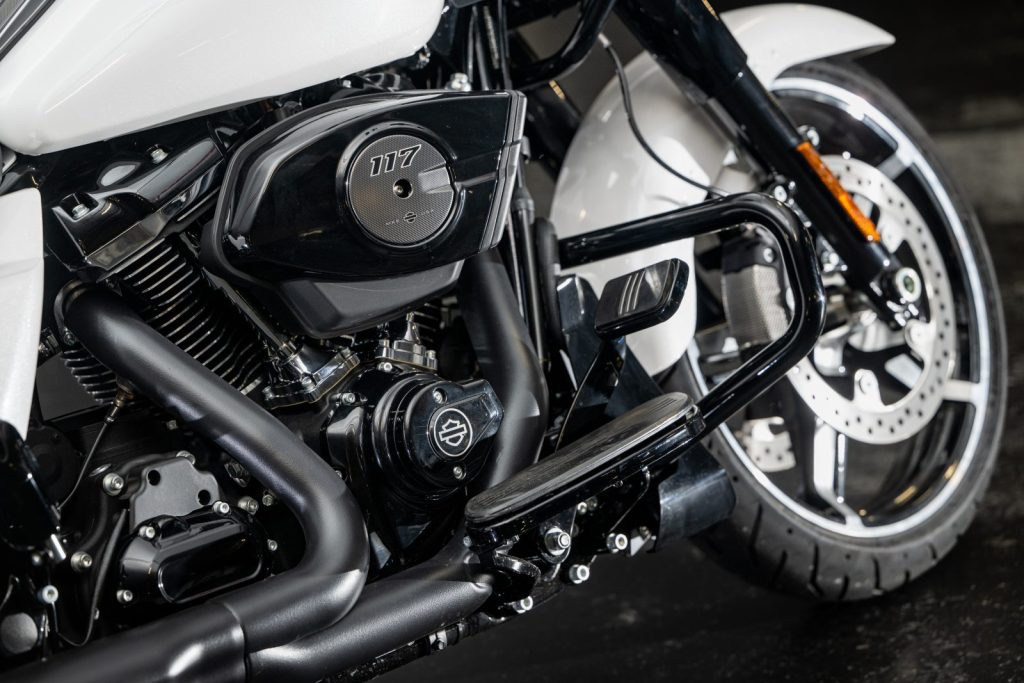
This is where, incidentally, the big difference between the Road and Sport Glides is first apparent. The Sport Glide uses Harley’s traditional Batwing fairing, which mounts directly to the handlebar and has done so since 1969. It uses a lower handlebar (although lots of options here) which brings the riders’ hands behind the fairing wings and pokes the mirrors out each side. That, and a very useful drawer for phones, keys and chewy means you’re swinging up to 15kg straight off the ’bars. Because the Batwing runs so close to the handlebar – and the fairing weighs 9kg less than the Road Glide’s – it’s not as noticeable as you’d think, but is noticeable.
The Road Glide’s fairing, with its big shark’s nose, is mounted directly to the frame giving lots more space behind the screen itself. Given that lifts the airflow, the Roady uses a six-inch higher handlebar that sits the rider more upright to take advantage of the excellent seat support and puts your hands in the breeze. The seat’s built up a bit although they’re both so comfortable I didn’t pay any attention to differences. The best thing about any seat is if you can sit all day and not notice it.
Harley has been running the fixed and handlebar-mounted fairing options –always designated Road and Sports – against each other for a lot of years making choice between the two the touring rider’s biggest option. Mounted up and travelling the Road Glide feels like a bigger bike with its higher fairing sitting farther upfront and a back angle heading towards ape hanger angles. The rider’s isolated a bit more from the road but the big difference is when you hit a crosswind or cop a racing truck going the other way. The Road Glide hardly notices, tracking straight as an arrow… maybe that should be tracking straight as a torpedo.
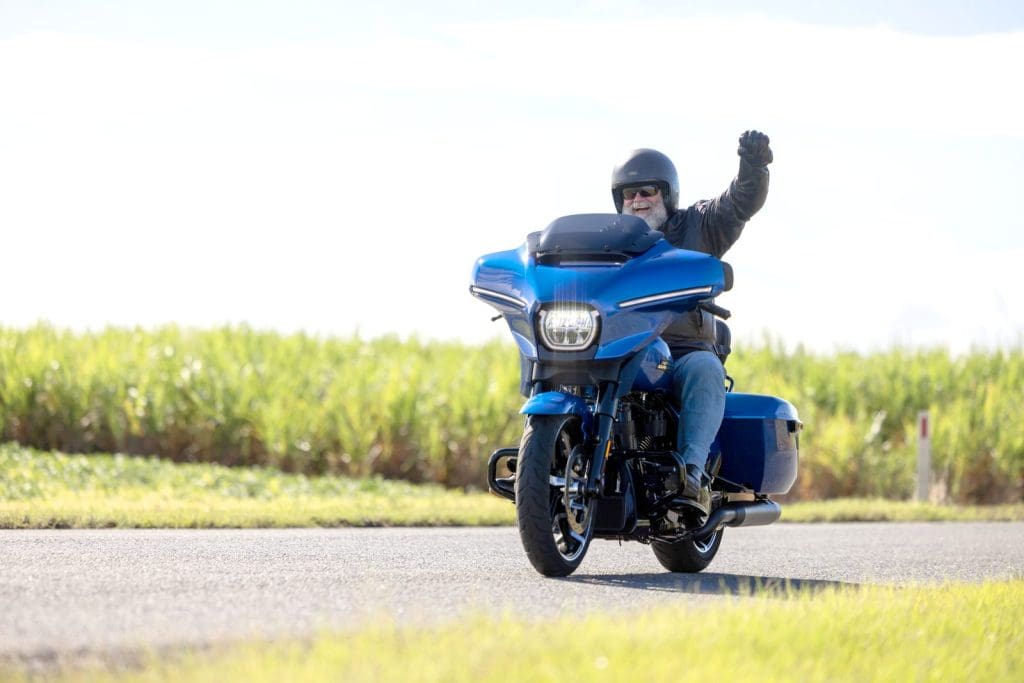
You feel changes in the wind more on the Sport Glide’s ’bar-mounted Batwing – yes, the original fairing came out around the same time as Batman on the telly – but it comes with the advantage of feeling like you’re hovering over the action. I reckon all the aerodynamic efforts Harley has put into both models really just brought them closer together. They’re both superbly stable.
Proof of that work is in the buffeting flaps under the mini screens, which can be adjusted for airflow or shut off completely. These give riders the option to direct air exactly where they want it helmet wise, which is a useful bit of fine tuning given we’re all different heights and wear different style helmets. I tried closing the flow off on both fairings before finding my chosen setting was a tad open and aimed above the eyes.
The Street Glide also gets fork-mounted deflectors and, according to the tech handout, it’s got ‘Willi Wings’ too. Not really sure what these are but I guess if you’re facing a long and lonely outback ride you might have time to play with them too.
That’s the truth of it. There are so many features on both these bikes – plus a truckload of accessory options – that it’d take a lot longer than a couple of days to find everything. The point is eventually you’ll tailor the bike to suit you and still have something to play with when the next corner’s 100 kays away. They don’t have heated grips though, and for us older hands in the colder weather that’s a real omission.

It made sense that the release for such high profile and fully featured weaponry would be the Gold Coast – not just so I could rub it in, Matho – but when I saw the route I figured someone had slipped up. It’s beautiful riding up behind Murwillumbah through sugarcane country and plenty of twisty roads, but the old backroad to Brisbane, the Numimbah Valley, copped so much flooding last season it’s loaded with surprise potholes and gravel traps. I mean, a bloke can make good speed through here on his DR650, but a fully fledged tourer?
Wrong, again. This is where all that work on suspension and frame geometry over many years has really paid off. Even with the floorboards touching occasionally, the big Americans hold their line on bad roads so well you, er, like the seats, don’t notice it. Bloody amazing and easy to ride hard without fear. The touring Glides offer way more confidence than most of the cruisers in Harley’s range, especially the Breakout, which always felt one degree off break out and spin when I rode it.
Getting back to the coast after a day’s backroad punting and a vineyard stop for lunch – sorry, Mick – most of us were in fine fettle and ready to rev. This is where these big bikes surprise again as the six-speed transmission backed by a lovely slipper clutch bringing in all that torque makes for instant action at the lights. Now I see why everyone’s excited by bagger racing!
My choice? Hmm, pretty easy really. After riding both stock Road and Street Glides up to the lunch break – did I mention the foie gras, Matho? – I grabbed a black Street Glide with the optional Screamin’ Eagle titanium mufflers and free-flow air cleaner kit for the ride back. It looked and felt traditional Harley but came with extra sting and a whole new soundtrack. Yep, Harley’s tourers are great standard but, like Scottish soldiers cresting a hill, it’s still all about the pipes.
PROS: Tuning of the 117 cube M8 engine for this application is spot-on, awesome yet predictable braking, and big panniers with proper hinged lids.
CONS: Harley’s version of weight loss is like mine; starts after the next cheeseburger. And both models need louder exhausts before you leave the dealership.
WORDS: JOHN ROOTH PHOTOS INCITE IMAGES
H-D ELECTRONICS

Today’s touring range gets a choice of four selectable riding modes. There’s Rain mode, which softens the whole deal substantially and feels like you need two hands on the throttle to wind her up. There’s Road, which is the setting you got before modes were invented, there’s high levels of traction control and ABS cutting in. There’s my favourite, Sport, because if someone says ‘push this and you’ll go faster’ you push it, right? It makes fast easy. And then there’s Custom, which lets you program your own riding mode. This one’s for serious geeks who spend a lot of time in the shed.
As for the other electrickery, there’s C-ELB (Cornering Electronically Linked Brakes), A-ABS (Cornering ABS), C-TCS (Cornering Traction Control), C-DSCS (Cornering Drag Torque Slip Control), VHC (Vehicle Hold Control), TPMS (Tyre Pressure Monitoring) and then there’s my favourite JRTF-OOI (Just Ride The F*** Out Of It).
CVO ROAD GLIDE ST
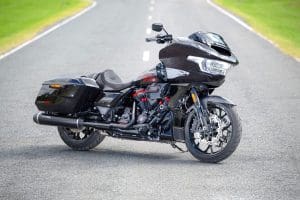
CVO is Harley-Davidson’s Custom Vehicle Operation and after 25 years it’s usually where you see the stuff that’ll come out on ‘standard’ models farther down the track. The higher-spec CVO Road Glide looks like it’s designed to impress bagger racers with a 121 cubic-inch high-output Milwaukee Eight engine, a lower final-drive ratio (output sprocket is 30 teeth, stock is 32 teeth) to punch harder out of corners and reduced weight/more performance thanks to a titanium exhaust and some carbon fibre bits. It also adds more modes – Track and Track Plus – which sound exciting!
SPECIFICATIONS
ENGINE
Capacity 1923cc
Type 45º V-twin, four valves per cylinder
Bore & stroke 103.5mm x 114.3mm
Compression ratio 10.3:1
Cooling Twin-cooled
Fueling Electronic sequential port injection, 58mm throttle body
Transmission Six-speed
Clutch Wet, multi-plate, slipper type
Final drive Belt
PERFORMANCE
Power 78kW (105hp) @ 4600rpm (claimed)
Torque 176Nm @ 3250rpm (claimed)
Top speed 195km/h (est)
Fuel consumption 5.3L/100km (claimed)
ELECTRONICS
Type Not given
Rider aids Cornering ABS, traction control, drag torque slip control and vehicle hold control
Rider modes Sport, Road, Rain or Custom
CHASSIS
Frame material Stubular steel
Frame type Backbone
Rake 26°
Trail 173mm
Wheelbase 1625mm
SUSPENSION
Type Showa
Front: 49mm non-adjustable upside-down fork, 117mm travel
Rear: Dual shocks, preload adjustable, 76mm travel
WHEELS & BRAKES
Wheels Cast aluminium
Front: 19 x 3.5 Rear: 18 x 5.0
Tyres Dunlop D408F & D407T
Front: 130/60-19 Rear: 180/55-18
Brakes
Front: Twin 320mm discs, four-piston calipers
Rear: Single 300mm disc, single-piston caliper
DIMENSIONS
Weight Road Glide 364kg; Street Glide 351kg (dry, claimed)
Seat height Road Glide 720mm ; Street Glide 715mm
Width Road Glide 745mm ; Street Glide 975mm
Height Road Glide 1315mm ; Street Glide 1350mm
Length 2410mm
Ground clearance Road Glide 145mm ; Street Glide 140mm
Fuel capacity 22.7L
SERVICING & WARRANTY
Servicing First: 1600km
Minor: 8000km
Major: 16,000km
Warranty Two years, unlimited kilometres
BUSINESS END
Price From $46,495 (ride away)
Colour options Billiard Gray, Vivid Black, White Onyx Pearl, Whiskey Fire, Blue Burst, Alpine Green, Atlas Silver Metallic or Sharkskin
CONTACT harley-davidson.com/au

